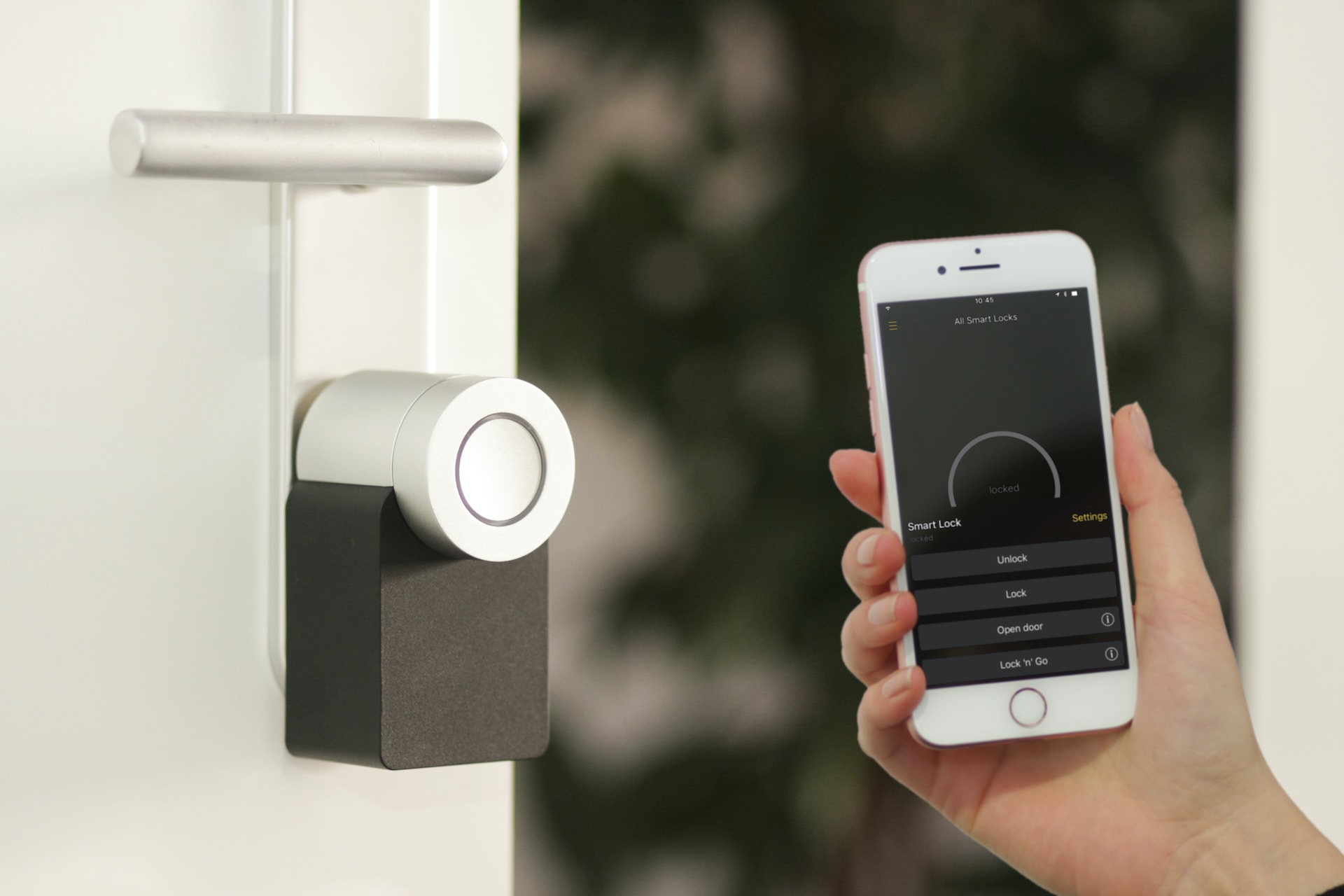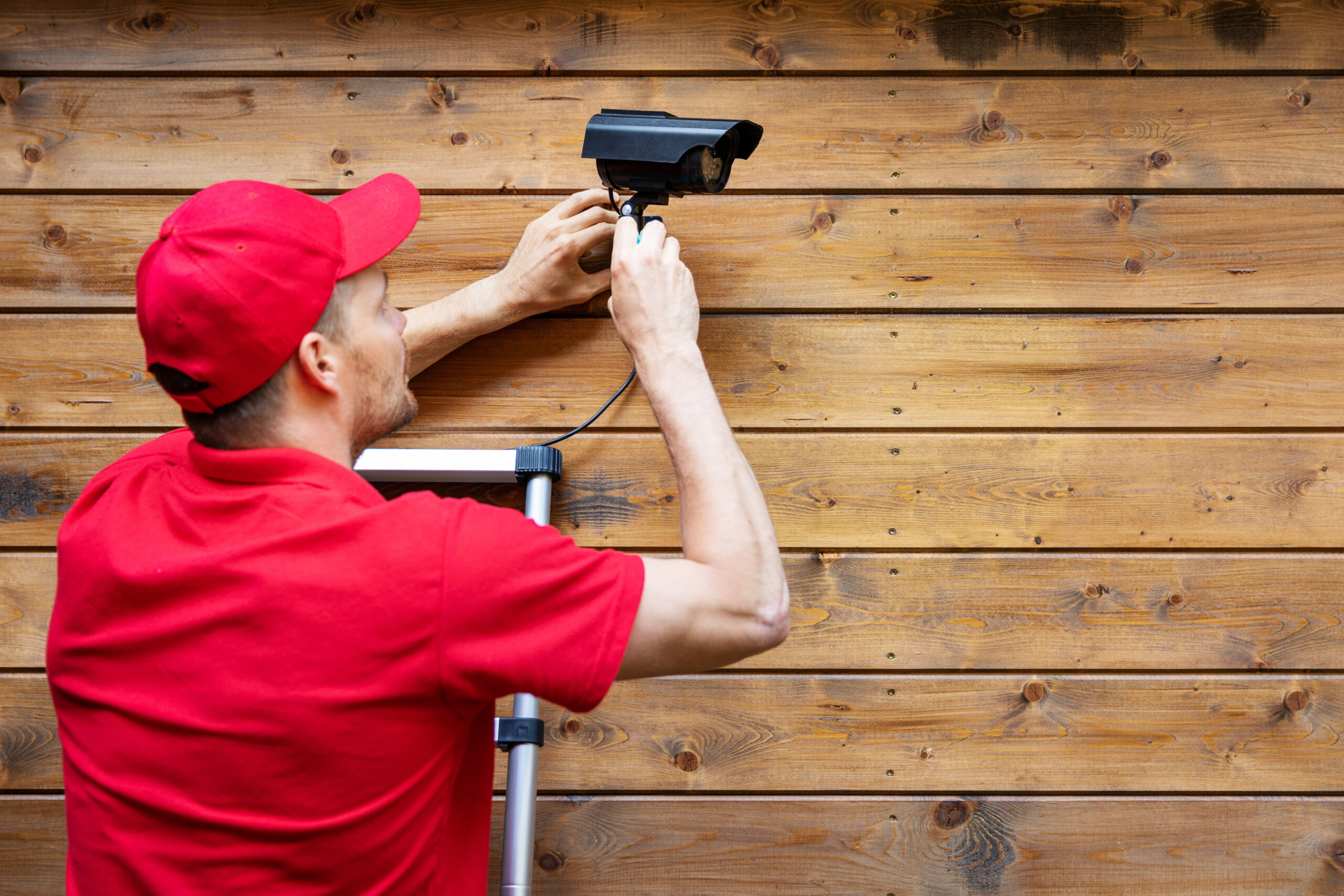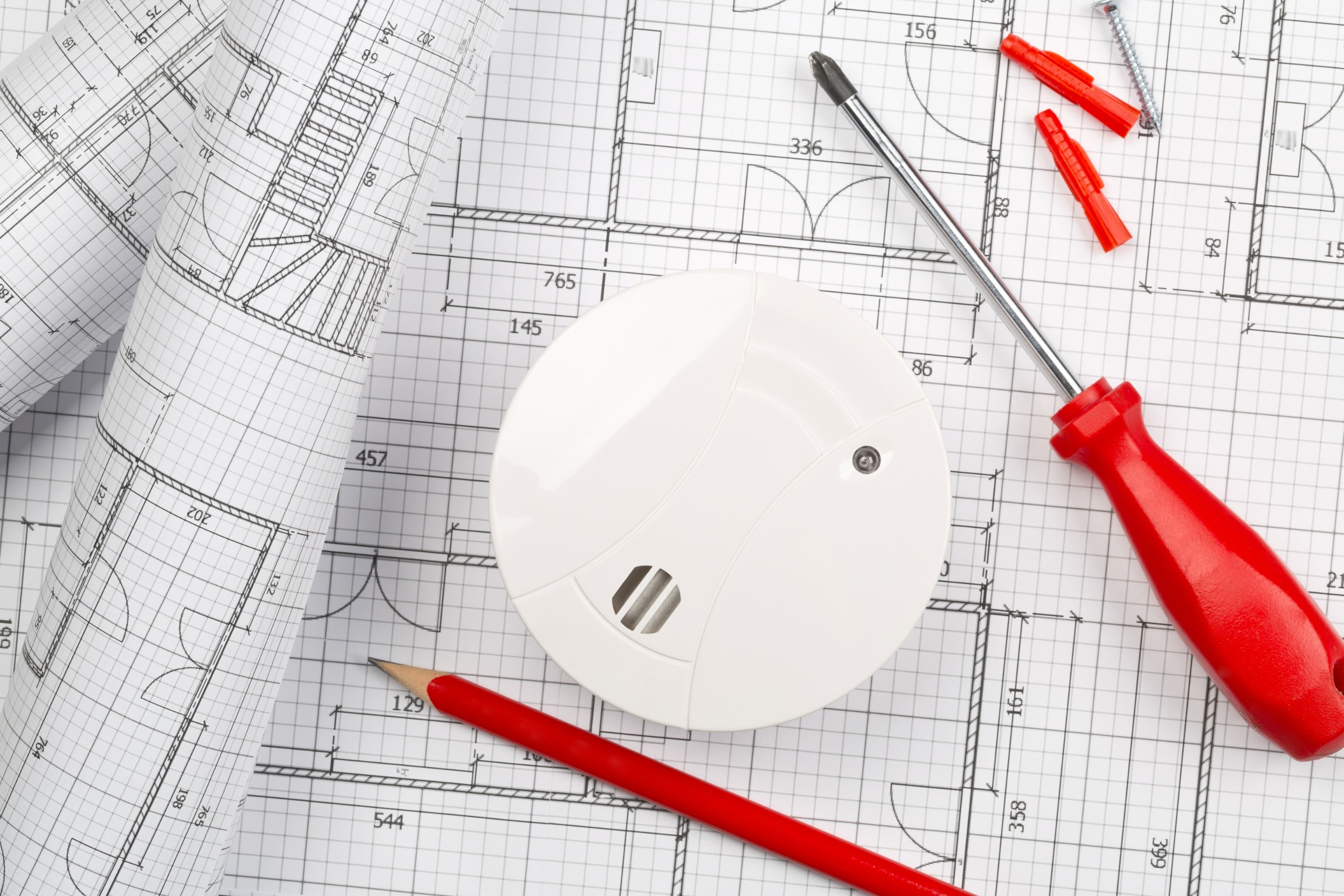How to Install Home Security System
A home security system is a network of devices and components designed to enhance the safety and security of a residential property. Its primary goal is to deter intruders, monitor activities, and alert homeowners or authorities in the event of unauthorized access, emergencies, or other potential threats. Home security systems vary in complexity and features, but they generally include a combination of sensors, cameras, alarms, and control panels.

Key Components of a Home Security System
These systems can be custom-made to meet the specific security needs of a household. Here are the key components when you install a typical home security system:
1. Control Panel or Hub:
- The central control unit manages and coordinates the various components of the security system.
- Allows users to arm, disarm, and configure the system settings.
- It often features a keypad for entering access codes.
2. Sensors:
- Door and Window Sensors: Detect the opening or closing of doors and windows. Trigger an alert if unauthorized access is detected.
- Motion Detectors: Use infrared or other technology to sense movement within a designated area. Useful for monitoring interior spaces.
- Glass Break Sensors: Detect the sound frequency of breaking glass and trigger an alert if a window is shattered.
- Smoke and Carbon Monoxide Detectors: Monitor for signs of fire and harmful gases, triggering alarms and alerts.
- Flood Sensors: Detect water leaks and flooding, especially in basements or areas prone to water damage.
3. Security Cameras:
- Monitor specific areas inside and outside the home.
- Record video footage for later review or evidence.
- Some cameras boast motion detection and night vision capabilities.
4. Alarms and Sirens:
- Emit loud sounds or sirens to alert occupants and deter intruders.
- It can be triggered by sensors or manually activated from the control panel.
5. Monitoring and Notifications:
- Alerts homeowners to events like breached sensors, detected motion, or alarms via smartphone apps, text messages, or email.
- Professional monitoring services can also be employed, where a monitoring center responds to alerts and contacts the appropriate authorities.
6. Smartphone Apps and Remote Access:
- Many modern home security systems offer mobile apps that allow users to monitor and control the system remotely.
- Users can receive alerts, view live camera feeds, arm/disarm the system, and receive updates on system status.
7. Home Automation Integration:
- Some home security systems integrate with smart home devices, allowing users to remotely control lights, locks, thermostats, and other devices.
8. User Codes and Access Levels:
- Homeowners can assign unique codes to family members, guests, and service providers to control access and monitor system activity.
9. Backup Power and Communication:
- Systems often have backup power sources (batteries) to keep them operational during power outages.
- Some systems use cellular communication to ensure communication with monitoring centers even if phone lines are down.
10. Environmental Monitoring:
- Some systems offer temperature monitoring to prevent freezing pipes or extreme temperature conditions.
Home security systems provide peace of mind by helping to prevent and respond to security breaches, emergencies, and potential hazards. The specific components and features you choose will depend on your home’s layout, security needs, and budget.
How to Install a Home Security System
Installing a home security system involves several steps to ensure the components are perfectly placed, connected, and configured for optimal performance. Here’s a general guide on how to install a basic DIY home security system:
Note: This is a general overview. For detailed guidance, follow manufacturer-specific instructions for your security system components. If you need more clarification, consider seeking professional installation services.
1. Gather Tools and Materials:
- Review the user manuals for each component to identify the tools and materials needed.
- Common tools include a drill, screws, screwdrivers, cables, cable clips, and a ladder.
2. Plan Component Placement:
- Determine where to install security cameras, sensors, and the control panel.
- Focus on entry points (doors, windows) and areas with valuable items.
3. Install Control Panel or Hub:
- Choose a centralized location for the control panel, near an entrance or in a main living area.
- Mount the control panel according to the manufacturer’s instructions.
4. Install Sensors:
- Door and Window Sensors: Attach the sensor components to the door/window and frame using adhesive or screws.
- Motion Detectors: Mount motion detectors at around 6-7 feet, typically in corners of rooms.
5. Install Security Cameras:

- Follow the manufacturer’s instructions for installing indoor and outdoor cameras.
- Cameras should have a clear view of the area you want to monitor.
6. Mount Alarms and Sirens:
- Install alarms and sirens in visible locations to deter intruders.
- Place them where the sound can be heard throughout the property.
7. Connect Components:
- Follow wiring or wireless connection instructions for each component.
- Connect sensors, cameras, and alarms to the control panel or hub.
8. Configure Control Panel:
- Follow the setup instructions to configure the control panel settings.
- Set user access codes, test sensors, and configure notification preferences.
9. Test the System:
- Trigger each sensor and component to ensure they activate the appropriate alerts.
- Test the alarm and sirens to make sure they are functioning correctly.
10. Install and Configure Mobile App:
- Download the manufacturer’s mobile app for remote access.
- Follow the instructions to pair the app with your security system.
11. Set Up Monitoring Services:
- If you’re using professional monitoring, follow the instructions to connect the system to the monitoring service.
12. Educate Household Members:
- Teach family members how to arm, disarm, and use the system.
- Show them how to receive alerts and access the mobile app.
13. Perform Regular Maintenance:
- Check and replace batteries in sensors and devices as needed.
- Keep cameras clean for clear images and ensure a clear line of sight.
14. Test and Adjust:
- Periodically test the system’s functionality to ensure everything is working as intended.
- Adjust settings as needed based on your experience and changing needs.
Remember, each component might have specific installation instructions, so follow the manufacturer’s guidelines carefully. Additionally, consider documenting your installation process, including where each element is placed and any access codes you’ve set. This documentation can be useful for troubleshooting and future reference. If you’re uncomfortable with any aspect of the installation, it’s always a great idea to consult a professional security system provider before installing it.
Choosing the Right Home Security System to Install
Choosing the right home security system is a critical decision that involves evaluating your home’s needs, considering your budget, and selecting the appropriate components. Here are some crucial factors to consider when choosing a home security system:
1. Type of Security System:
- Wired vs. Wireless: Decide between wired systems that require cabling and wireless systems that use Wi-Fi or cellular connections for communication. Wireless systems are often easier to install and expand.
2. Components and Features:
- Cameras: Determine the number and type of cameras you need (indoor, outdoor, doorbell, etc.). Consider resolution, field of view, night vision, and pan/tilt capabilities.
- Sensors: Choose sensors for doors, windows, and motion detection. Some systems offer additional sensors for smoke, carbon monoxide, and water leaks.
- Alarms: Choose the type of alarm you want, including audible alarms, smartphone alerts, and alerts to a professional monitoring service.
- Home Automation: Some systems integrate with smart home devices, allowing you to control lights, locks, and thermostats remotely.
- Remote Access: Consider whether you want the ability to monitor your system and receive alerts via a smartphone app or web interface.
3. Monitoring Options:
- Self-Monitoring: Receive alerts directly on your smartphone or email. You’ll be responsible for responding to alerts and contacting authorities if needed.
- Professional Monitoring: Pay a monthly fee for a monitoring service that responds to alerts and contacts authorities on your behalf.
4. Budget:
- Determine your budget for the initial purchase and ongoing monitoring fees (if applicable). Then, compare different systems and packages within your budget.
5. Scalability:
- Choose a system that allows you to add devices or expand coverage as your needs change.
6. Installation:
- Determine if you want to install the system yourself or prefer professional installation. Some systems offer DIY kits, while others require a professional setup.
7. Integration with Other Systems:
- If you have a smart home setup, choose a security system that integrates with your other devices and platforms.
8. Customer Support and Reviews:
- Research the manufacturer’s reputation and customer reviews for reliability, customer service, and ease of use.
9. Contract Length:
- Check the contract length and terms if you opt for professional monitoring. Some contracts might have minimum commitment periods.
10. Mobile App and User Experience:
- Assess the quality of the mobile app and user interface. An intuitive and user-friendly app makes managing your system easier.
11. Compatibility with Home Layout:
- Consider the layout of your home and the range of wireless devices. Ensure that the system’s coverage meets your requirements.
12. Privacy and Data Security:
- Choose a system that prioritizes data security and offers features like encryption and secure remote access.
13. False Alarm Prevention:
- Some systems, like pet-friendly motion sensors, offer advanced features to reduce false alarms.
14. Trial Periods and Return Policies:
- Check if the system provider offers a trial period during which you can test the system and return it if it doesn’t meet your expectations.
Before making a decision:
-
- Thoroughly research different home security systems.
- Compare features.
- Read reviews.
- Consider looking for recommendations from friends or family with security systems experience.
Customizing your choice to your specific needs and preferences will ensure you find a system that provides peace of mind and enhances your home’s security.

Create the Best Home Security Plan
A comprehensive home security plan is essential to ensure your security measures are well-organized and tailored to your needs. Here’s a guide on what to consider when you install a home security system:
1. Assess Your Home’s Vulnerabilities:
- Walk through your property to identify potential entry points such as doors, windows, and garage.
- Consider factors like visibility from the street, landscaping, and lighting that could affect security.
2. Prioritize Security Zones:
- Determine which areas of your home require the highest level of security. Focus on entry points and areas with valuable possessions.
3. Identify Security Components:
- Based on your vulnerabilities, decide on the types of security components you need:
- Door and Window Sensors: These are used to detect unauthorized entry.
- Motion Detectors: For detecting movement inside or around the house.
- Security Cameras: For monitoring and recording activities.
- Alarms and Sirens: To alert you and deter intruders.
- Smart Locks: To secure entry points remotely.
- Smoke and Carbon Monoxide Detectors: For safety against hazards.
- Flood Sensors: For water damage prevention.
4. Placement of Security Components:
- Strategically place sensors and cameras to cover vulnerable areas.
- Install cameras at entrances, garages, and key outdoor locations.
- Position motion detectors in common areas and hallways.
- Install window and door sensors on all accessible entry points.
5. Consider Interior Security:
- Install sensors on interior doors leading to sensitive areas like bedrooms or home offices.
- Consider installing a panic button in a central location for immediate emergency access.
6. Integration with Home Automation:
- If you have a smart home system, integrate security components with automation for more control and seamless operation.
7. Develop Response Plans:
- Determine how you will respond to different types of alarms or alerts:
- For self-monitoring, decide how you’ll receive and respond to notifications.
- Understand how the monitoring service contacts you and the authorities for professional monitoring.
8. Create User Access Levels:
- If multiple people use the system, establish different access levels and user codes.
- Decide who can arm/disarm the system and who can access the security cameras.
9. Test the Plan:
- Perform tests to ensure that all components are functioning correctly.
- Simulate various scenarios to see how alarms, notifications, and cameras respond.
10. Emergency Contacts:
- Put together a list of emergency contacts, including local law enforcement, fire department, neighbors, and family members.
11. Educate Household Members:
- Train all family members on operating the security system, including arming, disarming, and responding to alerts.
12. Regular Maintenance:
- Set up a schedule for testing and maintaining your security components.
- Change batteries, update firmware, and ensure cameras have clear views.
13. Document the Plan:
- Write down your home security plan, including component placement, codes, and contact information.
- Share this information with family members and keep a copy in a secure location.
Remember that your home security plan should be flexible and adaptable to changing needs. Review and update your plan as your family’s routine, technology, and home layout evolve. A well-organized and thought-out plan enhances the effectiveness of your home security measures and helps provide peace of mind. To ensure you install the best home security system, contact One AZ Alarm today!


